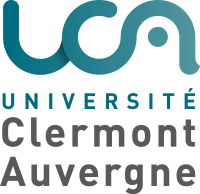Health and Environment
The Health and Environment pole draws on the knowledge and expertise of the LPCA to conduct, through multidisciplinary collaborations, fundamental research that is in sync with societal issues and related with the local environment. The pole is divided into 2 teams (Environment and Health), whose scientific skills today range from biology to nuclear physics, electronics, computer science, plasma physics, medical physics and volcanology.
In health, we design digital and instrumental approaches to help develop innovative therapies in humans. These approaches range from the creation and characterization of nano-structured biomaterials for bone filling, the production of radio-sensitizing metallic nanoparticles, to the development of simulation tools to anticipate tomorrow’s therapies and nuclear imaging, with the aim of creating a field of research combining fundamental biology and biophysical instruments for the study of cellular damage.

In the environmental field, we are developing precision instruments, simulation methods and intelligent sensor networks to instrument ecosystems and study, in particular, radioactivity in terrestrial and aquatic environments and its impact on living organisms. This research is carried out within the framework of the Zone-Atelier Territoires Uranifères.
In the field of IT, and in particular environmental data storage and sharing infrastructures, the team is involved locally in the Auvergne-based Cloud Environnemental, at the national level in data catalogs and data management for the Réseau des Zones Atelier as well as in new-generation storage infrastructures for earth sciences and sensor data, and at the European level in the design of a datalake for earth sciences.

Our research is supported by a technical platform consisting of the following equipment:
- An X-Rad 320 X-ray irradiator, with which we can carry out irradiations in a controlled environment at dose rates of up to 8 Gy/min and a total dose of 500 Gy.
- A CANBERRA gamma spectrometer, for non-destructive analysis of gamma emitters (between 35 and 2000 keV) present in the decay chains of Uranium 238, Uranium 235, Thorium 232 and artificial radioisotopes.
- A Hidex liquid scintillator for detection of low-level beta and alpha radioactivity.
- A total internal reflection fluorescence (TIRF) microscope for dynamic monitoring of DNA-protein interactions at single-molecule level.
- An acoustic force spectroscope for acquiring structural and mechanical information on biomolecules.
- A GATE open-source Monte Carlo simulation platform for modeling all types of irradiation, detection or imaging systems using ionizing radiation.
The scientific topics for health and the environment are supported by 31 researchers and professor-researchers, 2 engineers and 5 PhD students.
More...
You can find more information on our activities at the website see.lpc.uca.fr






